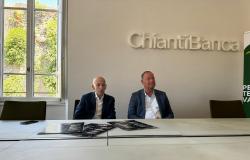There is no doubt that culture is one of the most important spots for the economic growth of our country. A city that does not invest in culture has no future. Isernia did well to focus on the Civic Museum which expresses and represents the identity of the city and its community in its exhibition rooms. A museum dedicated to conservation and to the dissemination of the rich Isernian heritage which represents an unmissable stop for lovers of history and culture, visited every year by over 20 thousand people who come from all over Italy. The museum has a peculiarity because it not only houses precious relics but also the memory of the history, faith and identity of a territory. Thus the Civic Museum represents the Isernian reality and is everyone’s heritage. A reality that is a precious opportunity for all those who can and want to visit the city of Isernia and admire this further piece of the cultural, historical, artistic and faith heritage. Isernia has been on a virtuous path for twenty years now. After a lot of work, this beautiful result was achieved which now becomes the safe for the city’s precious things. The Civic Museum of History and Memory is divided into four thematic areas and contains the pride and wounds of the city of Isernia. The largest section is dedicated to the American bombing which occurred on 10 September 1943, when tons of bombs were dropped on the city to block the way for the retreating Germans. The uniforms of the various armies that fought close to the line are displayed here  Gustav, the personal effects of the soldiers, their weapons and what remains of some of the gigantic bombs dropped by the allies, but above all the shrine where the names of the 500 people who died on 10 September 1943 are shown. Recently the museum heritage has been enriched of new finds and documents from the Second World War, of new historical and documentary sources, of private collections and of real works of art, thanks to donations, deposits, acquisitions and purchases. Many masterpieces on display belong to the Michele Romano Municipal Library directed by the excellent director Gabriele Venditti who gave valuable help in setting up the rooms and display cases. As I was saying, the structure is divided into four exhibition areas which, in a harmonious balance, allow testimonies and relics to dialogue with historical documents, cultural events with innovative languages. The Museum is undergoing an expansion and remodeling and an inauguration by Mayor Castrataro is expected soon as soon as the spaces are completed
Gustav, the personal effects of the soldiers, their weapons and what remains of some of the gigantic bombs dropped by the allies, but above all the shrine where the names of the 500 people who died on 10 September 1943 are shown. Recently the museum heritage has been enriched of new finds and documents from the Second World War, of new historical and documentary sources, of private collections and of real works of art, thanks to donations, deposits, acquisitions and purchases. Many masterpieces on display belong to the Michele Romano Municipal Library directed by the excellent director Gabriele Venditti who gave valuable help in setting up the rooms and display cases. As I was saying, the structure is divided into four exhibition areas which, in a harmonious balance, allow testimonies and relics to dialogue with historical documents, cultural events with innovative languages. The Museum is undergoing an expansion and remodeling and an inauguration by Mayor Castrataro is expected soon as soon as the spaces are completed exhibitions of the section dedicated to the events that occurred between 30 September and 20 October 1860. In this thematic area, fine relics dating back to the period of the Unification of Italy have recently been donated by enthusiasts and ordinary citizens. In this way, in a month, tourists and residents will have the opportunity to visit the new exhibition spaces, admiring the collected works that testify to the life and process of the city. The third section of the Museum is reserved for Celestine V, the Pope of the “great refusal” in Dante’s conception, which Isernia holds dear. The photographic exhibition “The journey of a Saint” organized by the diocese of Isernia-Venafro on the occasion of the arrival in the city of the relics of the Saint for the 800th anniversary of his birth is permanently shown in the room. The Diocese intended to proudly participate in this initiative which tells the story of the art and memory of a territory. The fourth section represents a journey into the historic art of bobbin lace, Isernian lace. In the rooms, on the upper floor of the building adjacent to the Fraterna fountain, both the work tools are exhibited, from the support cushion to the bobbins, through the threads and drawings, and the many masterpieces of this art in the traditional versions (specifically the linen for the home), but also in more modern reinterpretations with underwear and jewellery. A section curated by industry experts such as Maria Stella Rossi, Olimpia Giancola and Paola Buccigrossi. Thus continues the work of its founders which represents a constant commitment for the Museum, in the awareness that the city’s identity is strengthened by looking at the past, preserving its memory, but also constantly renewing research and the relationship with the public. A real investment in the city’s culture thanks to the commitment of some passionate scholars and experts on the subject who lend their work free of charge for the embellishment of the museum, lovingly followed by the municipal councilor delegated to the museum Claudio Falcione. Cultural aspects that touch all the souls of the city, making cultural participation an important vehicle for inclusion and social regeneration, but at the same time to encourage the birth of new tourist-cultural experiences, encouraging tourist flows, supporting the recovery of development and tourist-cultural activities in the historic center. The precious support given by individual citizens, collectors and scholars always provides new opportunities for the conservation, use and increase of the heritage exhibited in the civic museum. A constant commitment to safeguarding the historical-artistic assets of Isernia which enhances the layout resulting from the intentions of its founders and subsequent revisions. A museum custodian of the historical memory of the city, renewed over the years, in constant relationship with it which presents itself as a place for developing the city’s identity. It preserves a past that never stops communicating with the present, offering experiences that help shape the future. A visit to this museum is an unforgettable journey through time, an experience that will leave a lasting impression in the memory of anyone lucky enough to cross its threshold. Discovering a small treasure is always a pleasant sensation. It also happens in Isernia, a few meters from the symbolic monument of the city: the Fontana Fraterna. A treasure chest of beauties that is worth visiting.
exhibitions of the section dedicated to the events that occurred between 30 September and 20 October 1860. In this thematic area, fine relics dating back to the period of the Unification of Italy have recently been donated by enthusiasts and ordinary citizens. In this way, in a month, tourists and residents will have the opportunity to visit the new exhibition spaces, admiring the collected works that testify to the life and process of the city. The third section of the Museum is reserved for Celestine V, the Pope of the “great refusal” in Dante’s conception, which Isernia holds dear. The photographic exhibition “The journey of a Saint” organized by the diocese of Isernia-Venafro on the occasion of the arrival in the city of the relics of the Saint for the 800th anniversary of his birth is permanently shown in the room. The Diocese intended to proudly participate in this initiative which tells the story of the art and memory of a territory. The fourth section represents a journey into the historic art of bobbin lace, Isernian lace. In the rooms, on the upper floor of the building adjacent to the Fraterna fountain, both the work tools are exhibited, from the support cushion to the bobbins, through the threads and drawings, and the many masterpieces of this art in the traditional versions (specifically the linen for the home), but also in more modern reinterpretations with underwear and jewellery. A section curated by industry experts such as Maria Stella Rossi, Olimpia Giancola and Paola Buccigrossi. Thus continues the work of its founders which represents a constant commitment for the Museum, in the awareness that the city’s identity is strengthened by looking at the past, preserving its memory, but also constantly renewing research and the relationship with the public. A real investment in the city’s culture thanks to the commitment of some passionate scholars and experts on the subject who lend their work free of charge for the embellishment of the museum, lovingly followed by the municipal councilor delegated to the museum Claudio Falcione. Cultural aspects that touch all the souls of the city, making cultural participation an important vehicle for inclusion and social regeneration, but at the same time to encourage the birth of new tourist-cultural experiences, encouraging tourist flows, supporting the recovery of development and tourist-cultural activities in the historic center. The precious support given by individual citizens, collectors and scholars always provides new opportunities for the conservation, use and increase of the heritage exhibited in the civic museum. A constant commitment to safeguarding the historical-artistic assets of Isernia which enhances the layout resulting from the intentions of its founders and subsequent revisions. A museum custodian of the historical memory of the city, renewed over the years, in constant relationship with it which presents itself as a place for developing the city’s identity. It preserves a past that never stops communicating with the present, offering experiences that help shape the future. A visit to this museum is an unforgettable journey through time, an experience that will leave a lasting impression in the memory of anyone lucky enough to cross its threshold. Discovering a small treasure is always a pleasant sensation. It also happens in Isernia, a few meters from the symbolic monument of the city: the Fontana Fraterna. A treasure chest of beauties that is worth visiting.
Pasquale Damiani
 Print Article
Print Article









